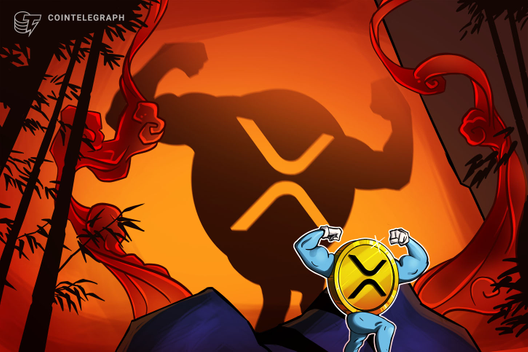Ethereum traders shorted ETH price in record numbers during the Merge — 50% crash ahead?
Ethereum successfully completed its long-awaited transition to proof-of-stake via “the Merge” on Sep. 15, while traders have been increasingly shorting Ether (ETH) in anticipation of a sell-the-news event.
Ethereum funding rate plumme
Ether’s futures funding rates across leading derivatives platforms dropped below zero—to their worst levels to date—before the Merge. The rate dropped to as low as -0.6% on BitMex.

Funding rates are a percentage of the fee paid to either short or long position holders. The platform decides the fee based on the difference between the perpetual futures contract and the spot price.
Therefore, traders consider a market bullish when the funding rate is positive. Conversely, a negative funding rate hints at a bearish sentiment in the market. Let’s understand why with an example.
Currently, Ether’s funding rate average is around -0.1%. In other words, traders with a $1 million short ETH position are willing to pay those with long positions $1,000 every eight hours (based on when platforms recalculate the funding rates).
That shows traders’ conviction in a potential spot Ether price drop after the Merge.
However, a consistently negative funding rate also increases the possibility of a short squeeze. A short squeeze occurs when an asset moves higher and short traders decide to cover their position or get forced to do so via margin calls, thus adding more upside strength to the asset’s price.
ETH price technicals hints at 50% breakdown
From a technical perspective, Ether’s price risks dropping by 50% in the coming weeks due to the formation of a symmetrical triangle on its longer-timeframe chart.
Notably, symmetrical triangles are trend continuation patterns, i.e., they typically prompt the price to continue in the direction of their previous trend after a consolidation period. So, Ether’s symmetrical triangle pattern appears bearish, particularly as it has formed after the token’s 80% decline from its November 2021 highs.

Theoretically, a bearish symmetrical triangle’s downside target is calculated after subtracting the triangle’s maximum height from the breakdown point. That puts ETH’s profit target in 2022 around $850.
Capital rotation into Bitcoin
In addition to negative funding rates and the symmetrical triangle setup, Ether also faces downside risks from a renewed buying interest in Bitcoin (BTC), the leading cryptocurrency by market capitalization.
On the daily chart, ETH/BTC dropped to 0.078 BTC on Sep. 15, almost a week after topping out at 0.085 BTC. The pair’s correction came after a strong bull cycle, wherein its price rose by more than 75% in less than three months.

“ETH’s underperformance ahead of the merge indicates that some traders attempt to front run a potential “sell-the-news” event,” noted Arcane Research in its weekly report, albeit adding:
“Whether or not the merge will turn out to be a ‘sell-the-news’ event remains to be seen.”
In another weekly report, investment management firm CoinShares reported a substantial decline in the capital of Bitcoin and Ethereum-based investment products.
Related: Analyst on $17.6K BTC price bottom: Bitcoin ‘not there yet’
However, Ether funds witnessed withdrawals worth $61.6 million in the week ending Sep. 9 compared to Bitcoin’s $13 million.
More sell-the-news cues come from a recent rise in Ethereum’s balance across all crypto exchanges. Notably, the Exchange inflow volume reached a one-month high of 22,723.289 ETH (7-day MA).

Traders typically increase their cryptocurrency deposits on exchanges when they want to sell their holdings. In other words, a rising ETH balance on exchanges increases downside risks.
The views and opinions expressed here are solely those of the author and do not necessarily reflect the views of Cointelegraph.com. Every investment and trading move involves risk, you should conduct your own research when making a decision.







